
views
X
Research source
Even so, these animals require more specialized conditions than many other aquatic pets.[2]
X
Research source
If you decide a bamboo shark is for you, be sure you've set everything up correctly before bringing one home.
Setting Up Your Aquarium

Purchase a large tank. The most important requirement for your new shark is that you buy a tank that is large enough. A small juvenile can be kept temporarily in a 30 gallon tank. Very soon, however, you'll need a much larger tank: 180 gallons is the minimum size for these sharks. Bamboo sharks are bottom dwellers and will rarely come up to the top of the tank. Therefore, if you are trying to choose between differently shaped tanks of similar size, choose the one with the largest bottom surface area. This will give your shark plenty of room to swim around. Round or hexagonal tanks are best, as the corners of a rectangular tank will restrict the shark's swimming motion.

Place the tank in a secure area. A tank of this size will be very heavy, once filled with water, rocks, and so on. Make sure to place it somewhere you are certain can bear the weight. A full 180 gallon tank can weigh close to 2000 pounds. If you place this on an upper floor, be certain the floor can withstand the weight. You may even need to have a contractor add additional support from below, unless your tank will sit on a ground floor with no basement or crawl space.
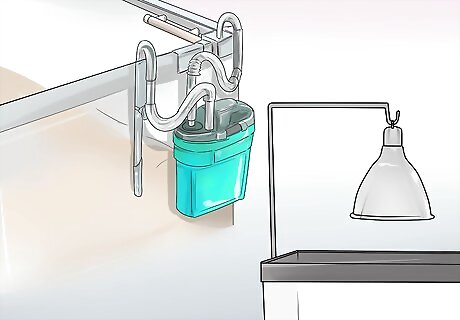
Set up pumps, filters, and heaters. To keep aquarium conditions safe and comfortable for your bamboo shark, you'll need to add several devices to your tank to keep the water clean, warm, and circulating. Sharks are carnivorous creatures that eat a lot and produce a lot of waste. It is important to have an effective filtration system to keep the water clean. Both an aquarium carbon filter and a protein skimmer are recommended. Both should be available at your aquarium store or online. A pump, such as a sump pump that keeps water circulating will help your filtration system work better. It will also help break down harmful nitrates and oxygenate the water. Your shark will also enjoy some gentle water movement. Like any aquatic animal, it's also important to keep the water temperature comfortable for your shark. A temperature of 78-82 degrees Fahrenheit is ideal for bamboo sharks. You can achieve this by purchasing an aquarium heater rated at two to three watts per gallon of tank
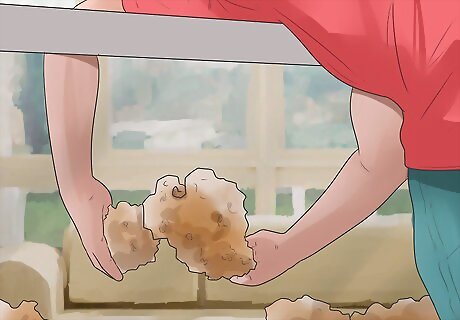
Add rocks and sand. Bamboo sharks like lots of room to swim, but it's also good to give them some hiding places in the form of rocks and/or a small cave. Live rock (rock from the ocean that contains beneficial organisms) is a good choice, though not strictly necessary. Live rock will be available at many aquarium stores and can also be purchased online. The bottom of the tank can be lined with sand to create a closer approximation of the ocean floor. Again, this isn't strictly necessary, but recreates a more natural environment for your shark. If your rocks will be piled up in such a way that they could be knocked over, some people think it's a good idea to glue them together using non-toxic aquarium glue. The bamboo shark is strong enough to knock rocks over, and you don't want yours to be injured by falling or sliding rocks.
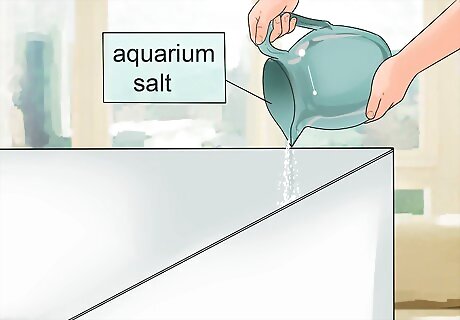
Prepare the water. Bamboo sharks need clean salt water to live in. To create the ideal habitat for them, special preparation is required using water filters and aquarium salt. Unless your tap water is utterly pristine, you shouldn't use it in your aquarium. Ideally, you should purchase a reverse osmosis de-ionization (RODI) water filter. This will remove all impurities from the water. Likewise, ordinary salt isn't going to create a good environment for your shark. Buy a few buckets of aquarium salt. A five gallon bucket typically makes about 150 gallons of salt water.
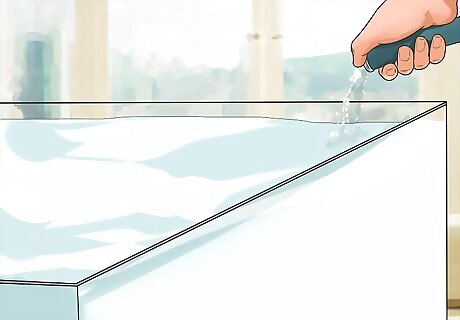
Fill the tank. Fill up the tank with your water and salt, as directed by package instructions. Start up your pump and heater. Your tank is now ready.
Introducing Your Bamboo Shark to the Aquarium

Buy your shark. Be sure to buy from a reputable pet store. Your shark should look healthy, and should not have any wounds. The shark should not appear to be "panting" or be overly lethargic. Its eyes and skin should not have any discolorations or white spots. Sharks are prone to bacterial and parasitic infections. This can cause discoloration of the skin, frequent "yawning," and chaffing on the bottom of the tank. Be watchful for any of these behaviors before purchasing a shark.
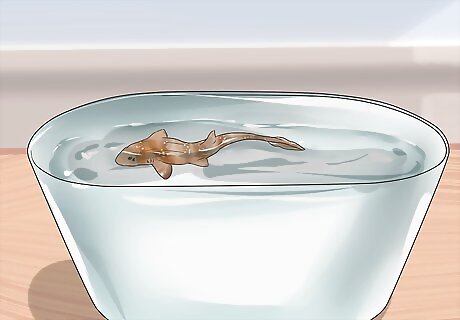
Put your shark in a large bucket. Put your shark, with the pet store or shipping water, in a bucket or other large container with plenty of extra room. Once you've brought your shark home, you can't simply dump it into the aquarium. The sudden change in chemistry between the pet store or shipping water and your aquarium water can be harmful or even fatal.
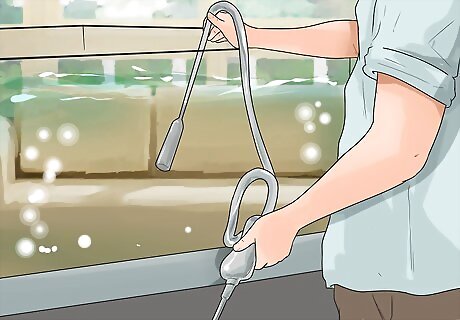
Start a drip line. Slowly siphon some water out of your aquarium into the bucket using an air line or other narrow hose. Keep the water to a drip by clamping or crimping the hose. You can start a siphon by gently sucking on the hose until water begins to flow, or using an electric pump. You can also use an auto-siphon pump, a simple, inexpensive device available at any home brewing or wine making store.

Dump out most of the water in the bucket. Once the water in the bucket has doubled, carefully pour most of it out, leaving just enough water to cover the shark.
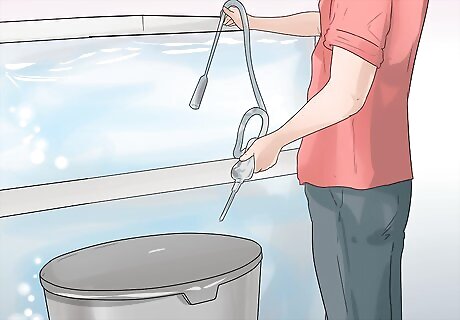
Fill the bucket back up. Slowly refill it again from the drip line. When the bucket is full again, you will have replaced about 95 percent of the pet store water with aquarium water. Your shark should be acclimated and you can now introduce it to the aquarium.
Caring for Your Bamboo Shark
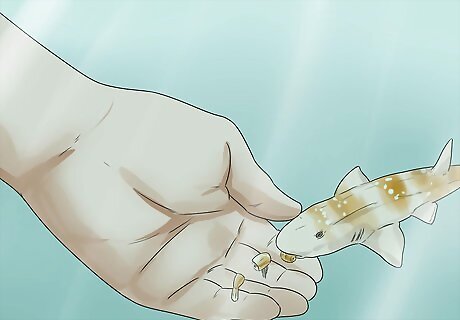
Feed the shark. Your new bamboo shark will eat foods such as uncooked shrimp, scallops, mussels, and pieces of fresh marine fish, squid or octopus. Cut any large food into bite-sized pieces. Do not feed your shark common feeder fish such as goldfish or guppies. These freshwater fish are not a natural food for bamboo sharks. If you wish to feed your shark live food, use silversides or sand eels. Bamboo sharks only need to be fed every two or three days. Give the shark a large portion of food a few times a week. If it loses weight, increase feeding. A juvenile shark should grow, but if an adult shark shows signs of weight gain, reduce the amount of food. When you first get your shark, it may be hesitant to eat. Providing live food such as saltwater feeder shrimp and fresh cockle (in the shell) may help entice it to eat. If it takes a few days to start eating, don't be alarmed. These sharks can survive a few weeks without eating.
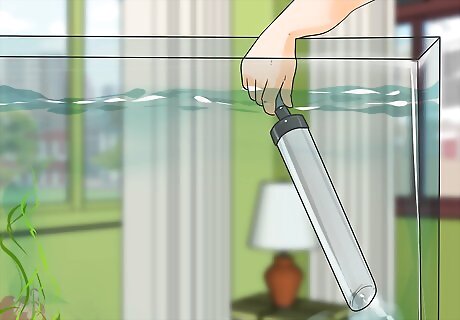
Keep the aquarium clean. A clean aquarium is important to keep your shark healthy. Clean/replace the filters often, and change the water when necessary. Your protein skimmer will need to be emptied approximately every other day. Follow package instructions for replacement of carbon filters. When water becomes overly soiled (i.e. cloudy), you will need to change it. This will require large containers full of RODI filtered and salted water, and pumps to remove the old water while adding the new.
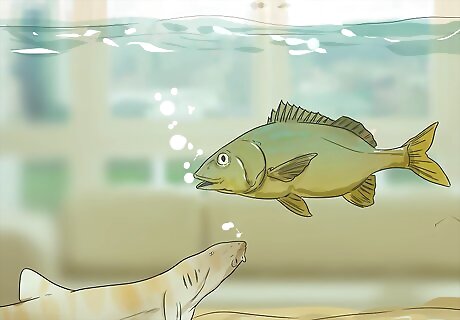
Introduce other fish if desired. Bamboo sharks can coexist with other fish if you want to make your aquarium more interesting. Be aware, however, that small fish will probably be eaten, and any crustaceans are likely to disappear very quickly. Bamboo sharks have been kept successfully with grunts, snappers, jacks, groupers, and goatfish.




















Comments
0 comment